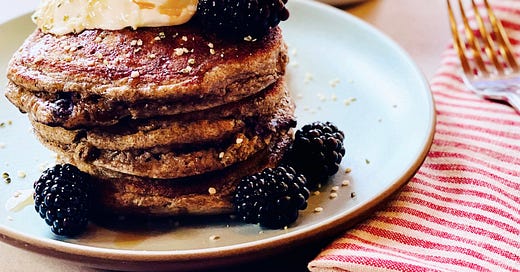Protein-Packed Pancakes With Wild Blueberries
Is the cottage cheese craze actually brain-healthy?
While I’m not one to follow food fads, it is hard to ignore that cottage cheese is having a moment. Instead of dismissing cottage cheese as another Tik Tok trend, let’s look at its potential brain health virtues. We’ve talked about the importance of getting enough protein, calcium, and gut-friendly probiotics in a brain healthy diet. Can good old cottage cheese check off all of these boxes, without adding too much saturated fat?
Truth is that cottage cheese products vary tremendously. To determine if cottage cheese deserves a spot on your refrigerator shelf, a little nutrition label reading know-how is key. Below, I’ll walk you through what to look for on the label and what to avoid. Plus, I’m sharing a new recipe for protein-boosted whole grain pancakes featuring—you guessed it—cottage cheese. I love how the cottage cheese adds a tangy buttermilk-like flavor to the pancakes and helps create a tender crumb, all while boosting the protein content.
What, exactly, is cottage cheese?
Cottage cheese is made by adding enzymes to skim milk to slowly ferment the milk sugars. Over time, it sets up like a block of soft cheese. In Indian cooking, that soft cheese is called paneer. To turn it into what we think of as cottage cheese, the block is cut to create its famous lumpy consistency. The curds are cooked for a while and then skim or whole milk or cream is added—this is what determines the cottage cheese’s saturated fat content. (More on that below.)




